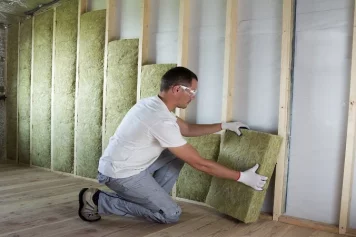Tax relief on renovations represents a major opportunity for homeowners. Renovation work offers considerable tax benefits. You can reduce your taxes while increasing the value of your property.
Tax relief related to renovations follows several mechanisms. Maintenance and repair expenses often become deductible from property income. This tax system encourages the improvement of French real estate.
Tax-deductible work varies depending on your situation. Energy renovations generate attractive tax credits . The real tax system also allows you to deduct certain housing-related expenses.
Land deficit planning is an effective tax optimization strategy. The work you do can significantly reduce your taxable income. However, this technique requires a thorough understanding of the tax system.
Reno , a renovation company in Paris, assists you with your renovation projects. Their experts are fully conversant with the technical and fiscal aspects of renovations. They identify projects eligible for tax credits for your primary residence.
Property tax may also benefit from temporary exemptions. Certain energy improvement projects qualify for these benefits. A company specializing in interior architecture and design, such as Reno, will be able to guide you through these complex procedures.
Owners must understand the intricacies of the applicable tax regime. Each type of work has its own tax treatment. Careful planning therefore maximizes the benefits of tax relief on the work.
Understanding the principles of tax relief for renovation work
Tax relief for renovations is based on several advantageous tax mechanisms. You can reduce your taxes through your renovation work. The government thus encourages the improvement of French real estate.
The different types of tax-deductible work
Tax-deductible work falls into several distinct categories. Each type offers its own tax benefits, so you need to be familiar with these distinctions to optimize your tax situation.
Energy improvement works and their tax impact
Energy-efficient renovations generate significant tax benefits. You can carry out an energy renovation and benefit from specific tax credits. Window replacement or thermal insulation fall into this category.
Installing new heating systems is also eligible. This way, you can reduce your energy bills and your taxes simultaneously. These deductible works also improve the value of your property.
Installing solar panels also benefits from attractive tax advantages. You can deduct a significant portion of this investment. The resulting energy savings complement this overall financial advantage.

Tax-advantaged maintenance and repair work
Maintenance and repair expenses offer tax relief opportunities. You can deduct them from your rental income under certain conditions. Roof repairs are a common example.
Replacing a faulty boiler falls into this tax category. You then benefit from an immediate tax deduction. This work keeps your property in good condition without increasing your tax bill.
Interior painting is also tax-deductible. This allows you to preserve the value of your real estate assets. However, this work must be supported by detailed invoices.
Distinction between main residence and rental property for tax exemption
Tax treatment differs depending on the type of property concerned. You won’t apply the same rules to all your assets. This distinction is essential to optimizing your tax strategy.
Tax benefits for work on your main residence
Primary residences primarily benefit from specific tax credits. You can directly reduce your income tax. Energy renovation work is particularly advantageous.
Installing equipment for seniors offers tax deductions. This allows you to adapt your home to your future needs. The tax deduction rate varies depending on the type of work performed.
Natural hazard protection work is also eligible. You can protect your home while reducing your tax bill. This program particularly applies to identified risk areas.
Possible deductions for work in a rental property
Rental properties allow you to deduct renovations from rental income. This directly reduces your tax base. This strategy is particularly effective with the actual tax system.
Renovating a rental apartment often generates a beneficial property tax deficit. You can deduct this tax deficit from your total income under certain conditions. The annual limit for this deduction is €10,700.
Work carried out between two rentals is fully tax-deductible. This maximizes the profitability of your rental investment. These expenses significantly reduce your overall tax burden.
Tax exemption mechanisms for property income
Landlords have several tax options available to them for their rental properties. You must choose the most advantageous tax regime. Strategies vary depending on the extent of the planned renovations.
The actual tax system and its tax advantages
The real tax system offers substantial advantages to property owners. You can deduct all of your expenses from your rental income. This option is a good choice for properties requiring renovation.
How to deduct your work from rental income
The deduction of work follows precise and documented rules. You declare these expenses on tax form number 2044. Each category of work has its own dedicated line.
Work deductible from property income must be supported by invoices. You must keep these documents for at least three years. The tax authorities may request them during an audit.
Preliminary work quotes are not sufficient proof. You must always obtain a detailed invoice after completion. The payment date determines the tax year of deduction.
Optimize your tax return with deductible work
Declaring tax-deductible work requires a methodical approach. You must clearly indicate the nature of each expense. Correct categorization maximizes your overall tax benefit.
Strategically spreading the work over several years can be a good idea. This allows you to balance your property income over time. This technique avoids excessive property deficits that cannot be carried forward.
Keeping your supporting documents is an essential precaution. This will help you prepare for a potential tax audit. Electronic invoices should be carefully archived.
Land deficit as a tax optimization strategy
The property deficit represents a powerful lever for tax optimization. You create this deficit when your expenses exceed your rental income. This situation generates immediate and future tax benefits.
Conditions for creating a deductible land deficit
Property deficits become deductible under certain specific conditions. You must rent your property unfurnished and not as a professional property. The property must also be rented as your primary residence.
Holding the property for a minimum of three years remains mandatory. Otherwise, you lose the benefit of the previous tax credit. This rule aims to prevent temporary tax optimizations.
Improvement work is the main source of property tax deficit. This allows you to renovate your property while reducing your tax liability. Loan interest generates a separate deficit.
Ceilings and limits of the land deficit
The property tax deficit is deducted from your total income up to a limit of €10,700. You carry forward the excess tax on your property income for the following ten years. This mechanism offers significant tax flexibility.
Loan interest creates a deficit that can only be deducted from property income. You cannot deduct it from your total income. This important distinction changes your investment strategy.
The micro-land regime option prohibits land deficits. Therefore, you choose the real regime for this strategy. The minimum commitment for this tax regime is three years.

Tax credits and reductions for your renovation work
Tax credit and reduction schemes complement tax deductions. You directly reduce your tax payable through these mechanisms. Several options exist depending on your personal situation.
The tax credit for the energy transition
The energy transition tax credit encourages eco-friendly renovations. You benefit from a direct reduction in your income tax. This scheme primarily applies to primary residences.
Work eligible for tax credit
Work eligible for the tax credit meets specific technical criteria. You must meet minimum energy performance requirements. Thermal insulation is one of the most common types of work.
Equipment using renewable energy sources is particularly favored. For example, you can install solar panels or a heat pump. Technical criteria evolve regularly based on technological advances.
Replacing exterior windows and doors remains eligible under certain conditions. This significantly improves the overall insulation of your home. Double glazing generally meets the required standards.
Calculation of the amount of the tax credit for work
The amount of the tax credit varies depending on the type of work performed. You multiply the cost of the equipment by the applicable rate. Current rates range from 15% to 75% depending on the work.
Renovation prices generally include materials and labor in the calculation. This gives you a tax benefit on the entire service. However, a multi-year cap limits the total amount.
The tax credit remains refundable even if you have no tax payable. You then receive the corresponding amount directly. This feature is particularly beneficial for low-income households.
Tax reduction for properties labeled Fondation du patrimoine
The Heritage Foundation offers specific tax benefits. You benefit from a direct tax reduction. This scheme primarily applies to old or remarkable buildings.
Conditions for obtaining the Heritage Foundation label
The Heritage Foundation label meets strict heritage criteria. You must have a building visible from the public highway. The heritage value of the property remains the essential condition.
The label application is submitted to the regional delegations. You compile a file including photos and descriptions. An expert then assesses the architectural significance of your property.
The proposed work must respect the building’s historic character. You will use traditional materials for the restoration. The exterior appearance is the priority for this label.
Tax reduction rates and ceilings
The tax reduction generally amounts to 50% of the amount of work completed. You can even reach 100% in certain exceptional cases. The cap depends on your overall tax situation.
Eligible work primarily concerns facades and roofs. This restores the visible exterior appearance of the heritage site. Modern technical equipment remains excluded from this program.
The label applies for a minimum of five consecutive years. You agree to keep the property during this period. Revocation occurs in the event of non-compliance with the commitments made.
Optimize your real estate taxes with energy renovation
Energy renovation represents a major opportunity for tax optimization. You can combine several complementary measures for your work. The impact on your taxes then becomes significant.
Energy renovation support systems
Energy renovation grants have been increasing in number for several years. You can combine certain tax benefits. This strategy maximizes the return on investment for your renovations.
Property tax exemption for energy-saving work
The property tax exemption rewards efficient renovations. You benefit from a temporary reduction in this local tax. The duration generally varies between three and five years.
Municipalities determine the specific terms of this exemption. You should therefore inquire with your local council. A quote for renovating a kitchen or other room may include this information.
Energy improvement work must reach a certain amount. You must justify these expenses with professional invoices. The application is made after the work is completed.
Accumulation of tax aid for energy renovation
The accumulation of tax benefits follows specific rules. You can combine tax credits with property income deductions. These two mechanisms target different tax situations.
However, subsidies received reduce the basis for calculating benefits. You deduct their amount from the total cost of the work. This rule prevents double public funding of the same expense.
The micro-land regime limits the possibilities for accumulation. You must therefore choose your tax regime wisely. A preliminary simulation is often essential before making a decision.

Work planning strategies to maximize tax benefits
Strategic work planning optimizes your overall tax situation. You spread expenses over several fiscal years. This rational approach also avoids unattributable deficits.
Spreading the work over several fiscal years
Spreading out the work offers considerable tax advantages. This allows you to spread your tax bill over several years. This technique is particularly effective for large projects.
Split payments determine the tax deduction year. This allows you to strategically adjust your payments. Bathroom renovation quotes often include this option.
The balanced distribution optimizes the allocation of the property deficit. You avoid exceeding the annual ceiling of €10,700. The excess can still be carried forward, but it is less tax-efficient.
Optimal choice between tax credit and income deduction
The choice between a tax credit and a deduction depends on your personal situation. You analyze your marginal tax rate before making a decision. The credit is more beneficial to taxpayers with modest incomes.
The property income deduction benefits highly taxed homeowners. You reduce your tax base proportionally to your rate. This option is suitable for high incomes.
The tax credit applies only to your primary residence. You opt for the property income deduction for your rental properties. This fundamental distinction guides your overall strategy.
Call on a specialist company to optimize your renovation projects
Hiring professionals guarantees tax-optimized work. You benefit from personalized technical and tax advice. This expertise helps prevent costly mistakes.
The benefits of working with professionals like Reno
Specialized companies are fully conversant with tax systems, allowing you to optimize every aspect of your renovation project. Their technical expertise complements the tax approach.
Technical and tax expertise for your tax-deductible work
Technical expertise precisely determines which work is tax-deductible. You clearly identify expenses eligible for tax benefits. Accurately classifying each item becomes essential.
Agencies like Reno are well-versed in tax law developments. You benefit from the latest and most advantageous measures. Continuous legal monitoring ensures this constant update.
Complete technical documentation facilitates your subsequent administrative procedures. You have all the necessary supporting documents. These elements prove invaluable during potential tax audits.
Personalized support for your renovation project
Personalized support adapts the work to your tax situation. You optimize technical choices based on your tax benefits. This tailored approach maximizes your return on investment.
Tips for converting your garage include the tax dimension of the project. This way, you can transform a simple expense into a tax-free investment. This significantly improves your overall profitability.
Administrative support simplifies your tax exemption procedures. You receive all the documents necessary for your tax returns. This assistance prevents harmful errors or omissions.

Tailor-made solutions for apartment and house renovations
Tailor-made solutions perfectly adapt the work to tax opportunities. You benefit from a project that is technically and fiscally coherent. This comprehensive approach optimizes every aspect of your renovation.
Studies and advice to maximize your tax savings
Preliminary studies identify the tax potential of your project. You know exactly how much tax savings can be made. This visibility greatly facilitates your decision-making.
Personalized advice guides your technical and material choices. You prioritize solutions that offer the best tax benefits. Any additional costs are eliminated thanks to the tax savings generated.
Cost-benefit analysis systematically incorporates the tax dimension. You evaluate each option based on its overall impact. This method guarantees optimal profitability for your investment.
Monitoring of work and compliance with tax requirements
Rigorous monitoring of the work ensures compliance with tax criteria. This ensures you meet all required technical standards. This vigilance fully secures your tax benefits.
Professionals verify the quality of the installed equipment. You receive certificates attesting to its performance. These documents constitute essential tax proof.
Invoice verification ensures their validity for the tax authorities. You have documents that fully comply with the requirements. This precaution prevents subsequent deduction rejections.







